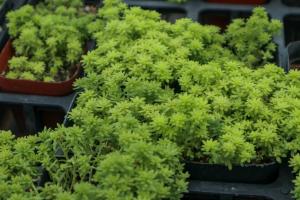How Long to Pot Rubber Plant Cuttings
One of the easiest ways to propagate a rubber plant is through cuttings. This process involves taking a cutting from the parent plant and then rooting it in a separate pot. Once the cutting has rooted, it will need to be potted. But how long should you wait before potting a rubber plant cutting? Here are some factors to consider.
The Importance of Root Growth
Before a rubber plant cutting is potted, it needs to have established a strong root system. This root system is essential for the plant to survive and thrive in its new pot. Without sufficient roots, the plant will struggle to take up water and nutrients, which can lead to wilting, yellowing or dying leaves.
Factors That Affect Root Growth
There are a few factors that can affect how long it takes for a rubber plant cutting to develop roots. These include the size of the cutting, the method of rooting and the environmental conditions. Generally, larger cuttings with more leaves will take longer to root than smaller cuttings with fewer leaves. Cuttings that are rooted in water or with rooting hormone may also develop roots more quickly than those without.
How Long to Wait Before Potting
In general, it's best to wait until a rubber plant cutting has developed a strong network of roots before potting it. This can take anywhere from 2-6 weeks or longer, depending on the conditions. To check if your cutting has rooted, gently tug on the stem. If you feel resistance, it likely has developed roots. If it comes out easily, it needs more time to root.
Potting the Cutting
Once your rubber plant cutting has developed a strong root system, it's time to pot it. Use a well-draining potting mix and choose a pot that is slightly larger than the root ball. Carefully remove the cutting from its rooting container, being careful not to damage the roots. Place the cutting in the new pot and fill in with additional potting mix, pressing firmly around the stem. Water the cutting thoroughly and place it in a bright but indirect light location.
Caring for Newly Potted Rubber Plant Cuttings
After potting your rubber plant cutting, it will need a little extra care to help it adjust to its new environment. Keep the soil moist but not waterlogged, and avoid fertilizing for the first few weeks. Monitor the plant closely for signs of stress such as wilting or yellowing leaves, and adjust the watering or light accordingly.
Conclusion
While it may be tempting to pot a rubber plant cutting as soon as it has developed roots, it's important to give it sufficient time to establish a strong root system. By waiting until the cutting has developed a network of roots, you're giving it the best chance of thriving in its new pot.

 how many times do yo...
how many times do yo... how many planted tre...
how many planted tre... how many pine trees ...
how many pine trees ... how many pecan trees...
how many pecan trees... how many plants comp...
how many plants comp... how many plants can ...
how many plants can ... how many plants and ...
how many plants and ... how many pepper plan...
how many pepper plan...































